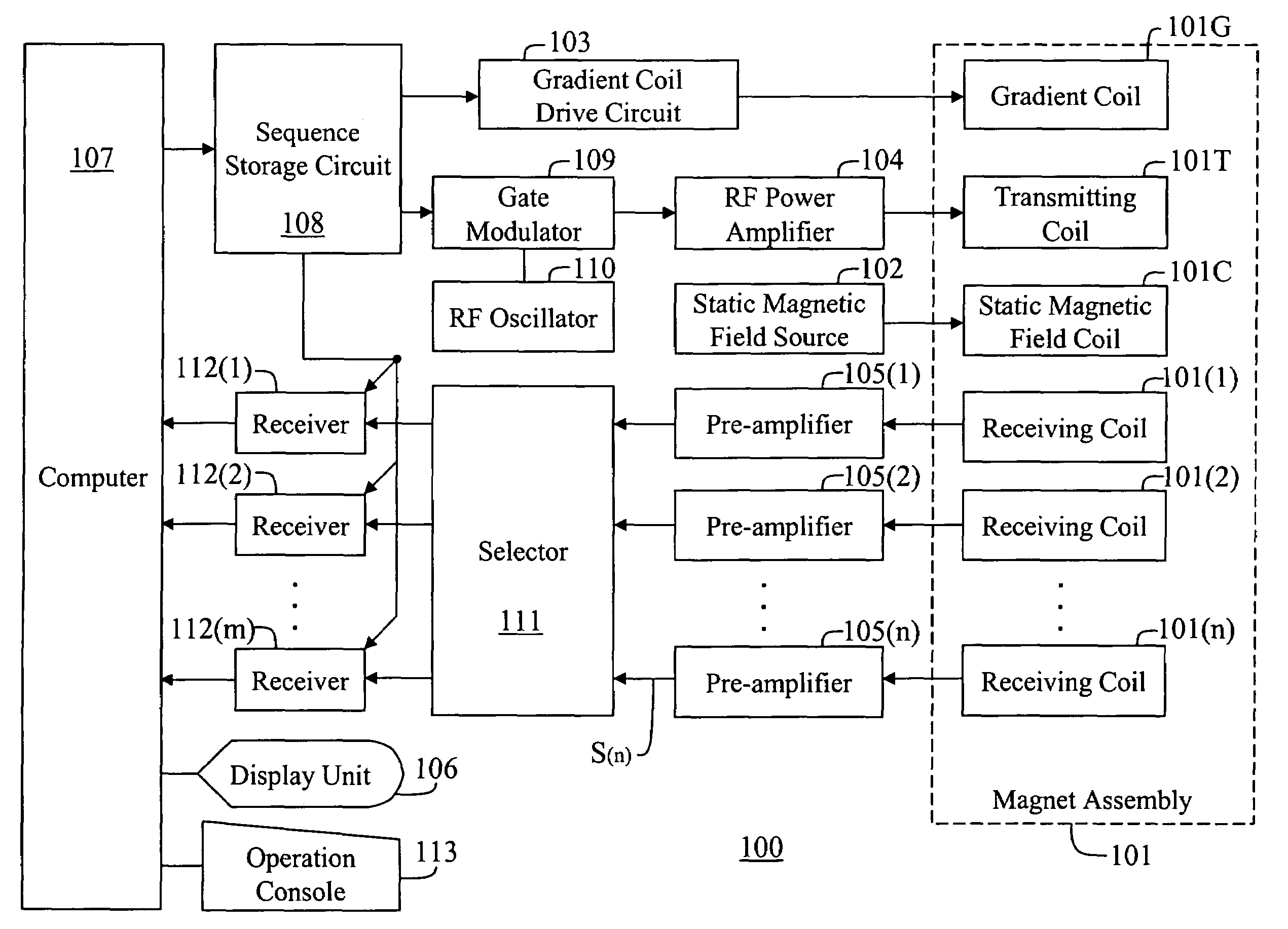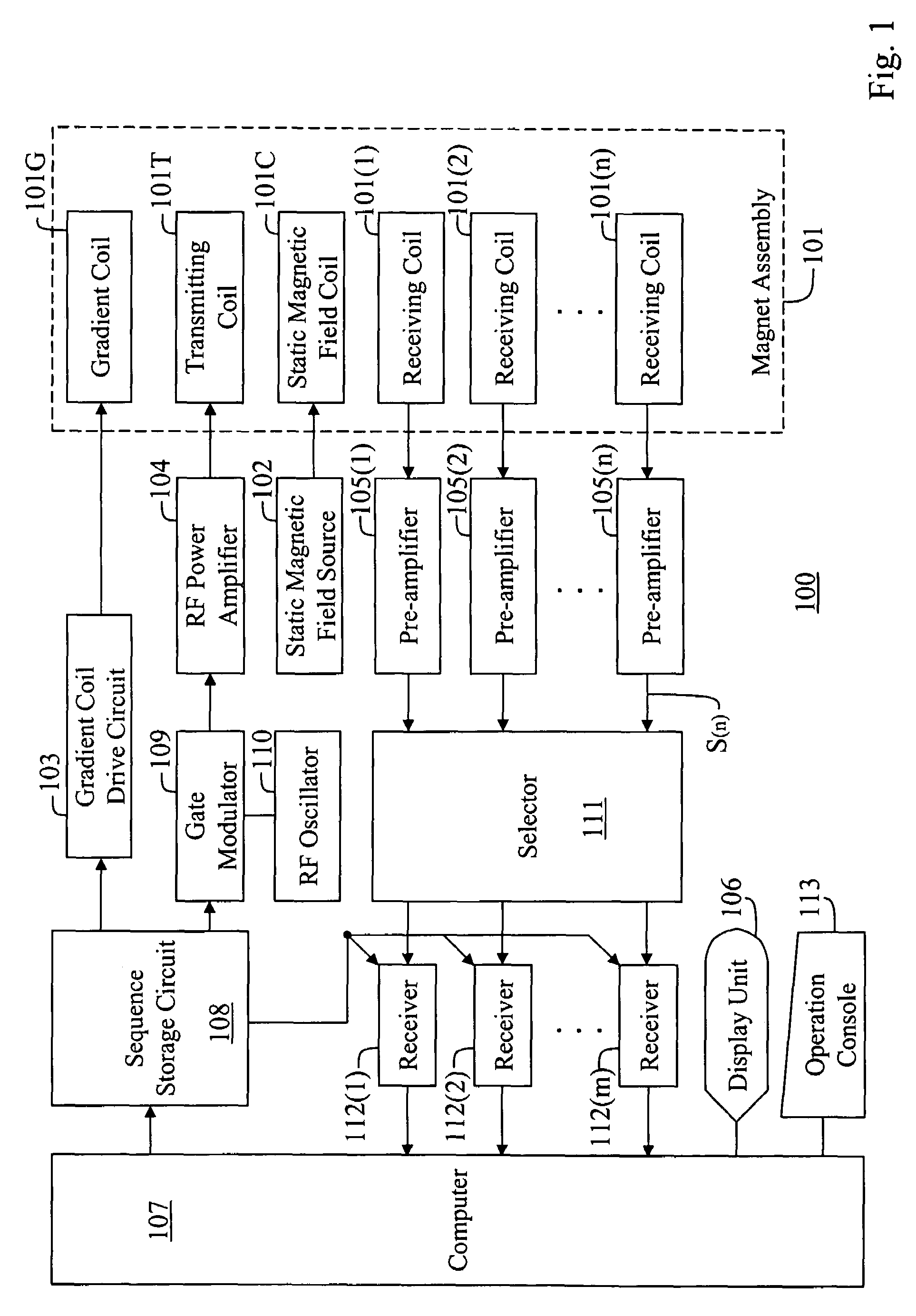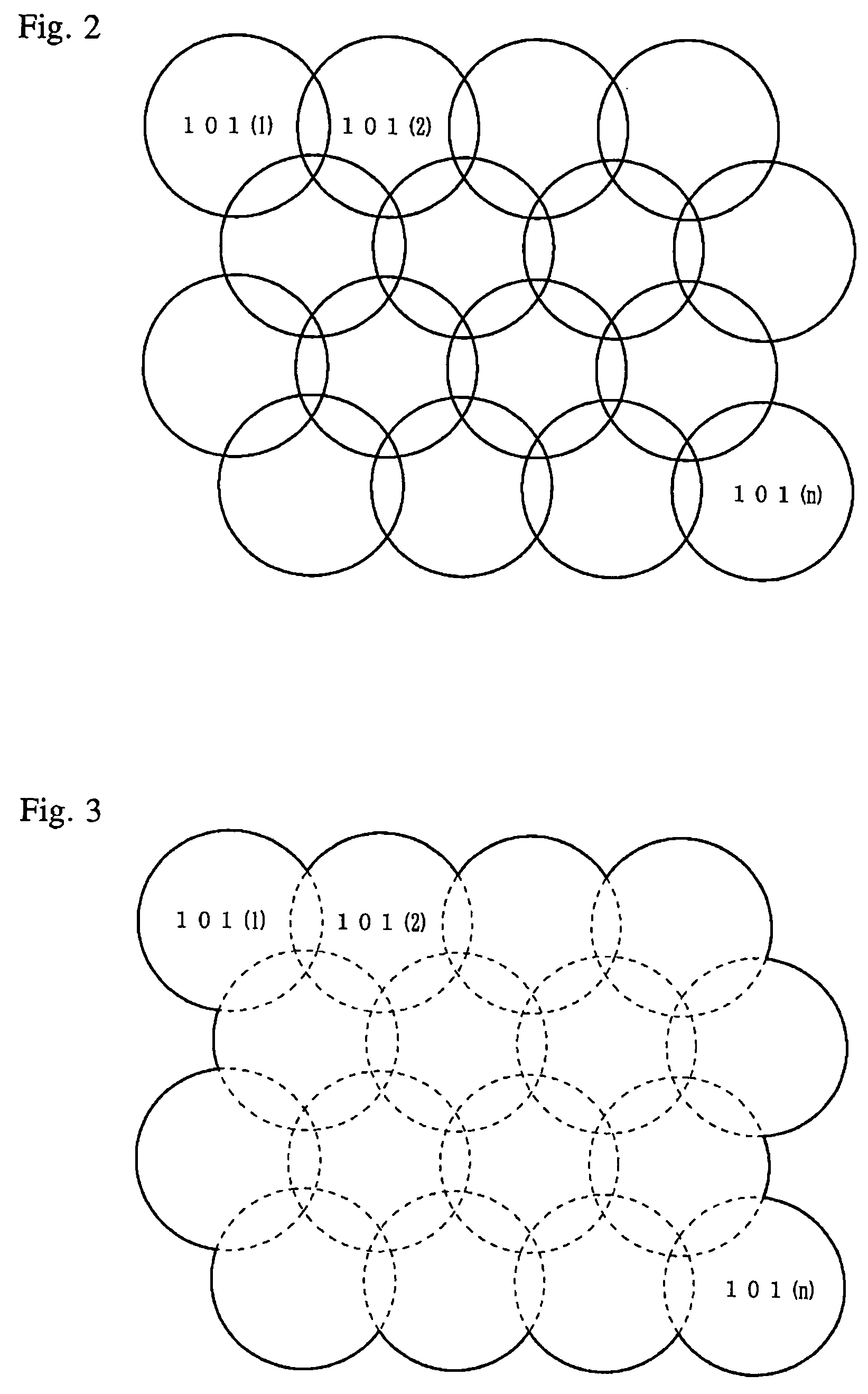Image generating method and MRI apparatus
a generation method and image technology, applied in the direction of instruments, reradiation, measurement using nmr, etc., can solve the problems of artifact generation, inability to obtain satisfactory images, and inability to acquire data by the body coil, etc., to achieve excellent picture quality
- Summary
- Abstract
- Description
- Claims
- Application Information
AI Technical Summary
Benefits of technology
Problems solved by technology
Method used
Image
Examples
embodiment 1
[0065]FIG. 1 is a block diagram showing an MRI apparatus 100 according to an embodiment 1.
[0066]In the MRI apparatus 100, a magnet assembly 101 has a spatial portion (bore) for inserting a sample thereinside. A static magnetic field coil 101C for applying a constant static magnetic field to the sample, a gradient or slope coil 101G for generating gradient or slope magnetic fields for an X axis, a Y axis and a Z axis, a transmitting coil 101T for supplying an RF pulse for exciting the spin of a nucleus in the sample, and n-channel receiving coils 101(1), 101(2), . . . , 101(n) for receiving an NMR signal from the sample are disposed in the magnet assembly 101 so as to surround the spatial portion.
[0067]Incidentally, a slice axis, a phase encode axis and a lead axis are formed by combinations of the X axis, Y axis and Z axis of the gradient coil 101G of the magnet assembly 101.
[0068]The static magnetic field coil 101C, the gradient coil 101G and the transmitting coil 101T are respecti...
embodiment 2
[0093]FIG. 6 is a flow chart showing an imaging / image-generating process according to an embodiment 2.
[0094]In Step T11, a sample is imaged using a first coil 101(1), a second coil 101(2), . . . , an nth coil 101(n), and first data K(1), second data K(2), . . . , nth data K(n) for a k space are read into a computer 107.
[0095]In Step T12, a first low resolution image d(1), a second low resolution image d(2), . . . , an nth low resolution image d(n) are reconstructed from partial data close to k=0 (equivalent to about 32 lines near k=0 in the case of a resolution of 256×256, for example), of the first data K(1), second data K(2), . . . , nth data K(n). Incidentally, these images are complex images, and their pixel values are equivalent to vectors and have phases and magnitude.
[0096]In Step T13, a coil number counter is initially set to k=2.
[0097]In Step T14, the respective pixel values of a kth low resolution image d(k) are phase / amplitude-corrected using a kth phase shift amount φ(k)...
embodiment 3
[0112]FIG. 7 is a flow chart showing a calibrating process according to an embodiment 3.
[0113]In Step S11, an operator positions and images or photographs a first coil 101(1), second coil 101(2), . . . , nth coil 101(n) and a phantom, and reads first data K(1), second data K2), . . . , nth data K(n) of a k space into a computer 107.
[0114]In Step S12, a first low resolution image d(1), a second low resolution image d(2), . . . , nth low resolution image d(n) are reconstructed from partial data close to k=0 (equivalent to about 32 lines near k=0 in the case of a resolution of 256×256, for example), of the first data K(1), second data K(2), . . . , nth data K(n). Incidentally, these images are complex images, and their pixel values are equivalent to vectors and have phases and magnitude.
[0115]In Step S13, a coil number counter is initially set to k=2.
[0116]In Step S14, a composite signal (vector obtained by adding vectors of respective pixels) of a pixel group (about 30×30 pixels in th...
PUM
 Login to View More
Login to View More Abstract
Description
Claims
Application Information
 Login to View More
Login to View More - R&D
- Intellectual Property
- Life Sciences
- Materials
- Tech Scout
- Unparalleled Data Quality
- Higher Quality Content
- 60% Fewer Hallucinations
Browse by: Latest US Patents, China's latest patents, Technical Efficacy Thesaurus, Application Domain, Technology Topic, Popular Technical Reports.
© 2025 PatSnap. All rights reserved.Legal|Privacy policy|Modern Slavery Act Transparency Statement|Sitemap|About US| Contact US: help@patsnap.com



